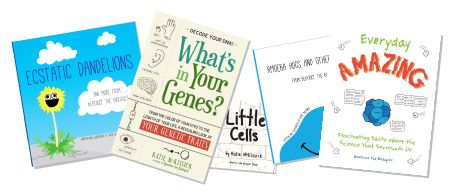Just kidding about the hamsters.
Every living thing on earth has DNA (though I make no such promises about aliens).
Think of a DNA as a manual with instructions for building and maintaining an organism.
The whole manual, then, is the genome: all the DNA for a particular organism.
If the genome is a book, then each page is a gene, which has instructions for making a specific protein.
These proteins are what make you who you are and every other living thing what he/she/it is. It’s all about the proteins. They are the pigments that determine your hair, skin, and eye color (which I hear is a big part of our identities). They are the hormones that make you a man or woman. They are the neurochemicals in your brain that allow you to think. Proteins in certain concentrations in certain areas during development proclaim “arm goes here” and “head goes here.”
I’m not entirely kidding. Proteins look a lot like this.
Every cell has the full set of instructions, but not every cell reads the whole manual. It’s split into chapters. The cells in your liver just read the “liver cell” chapter, while those in your heart just read the “cardiac muscle chapter.”
As cells consult the manual every time they need to build a new protein, you’ll get some wear and tear. Sticking with this book metaphor we have going here–you can tell the difference between a brand new book from Barnes&Noble and a book that has been read 100 times at the beach, at a diner, and in the bath tub.
*Both are Mary Roach books.*
*Also, I swear I don’t treat my books this way.*
This wear and tear on the genome is what causes aging and sometimes cancer. If you spill some ketchup on the page that describes how to make the protein melanin, you’ll start to get grey hairs because your hair follicle cells can’t read the exact instructions any more.
Our human manual is not entirely unique: 98% of the pages in our manual are also in chimpanzees’ manual. The more similar two creatures are, the more pages they have in common. We share many of our pages with other vertebrates, like lions, tigers, and bears, but we also share half our pages with bananas, so don’t get too cocky.









